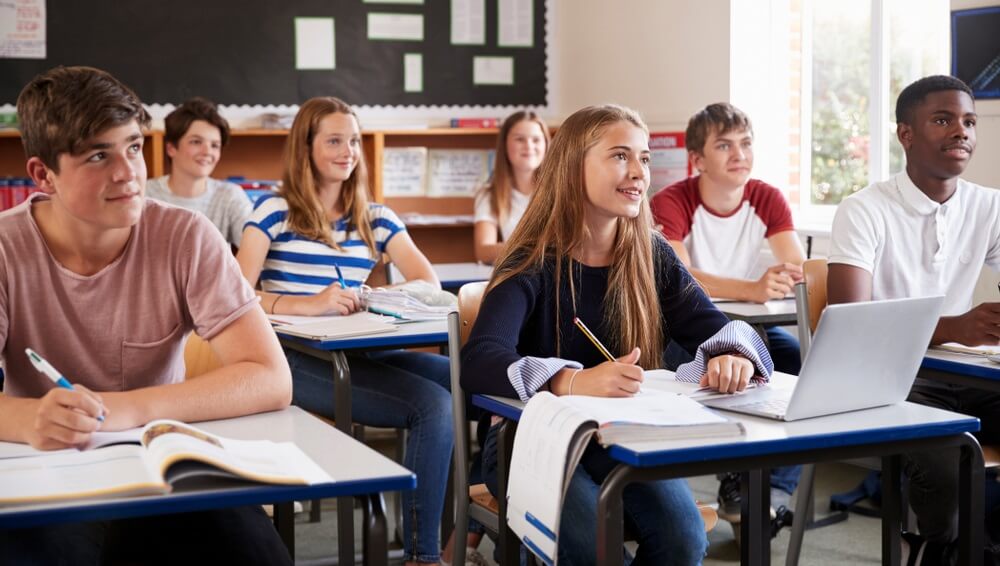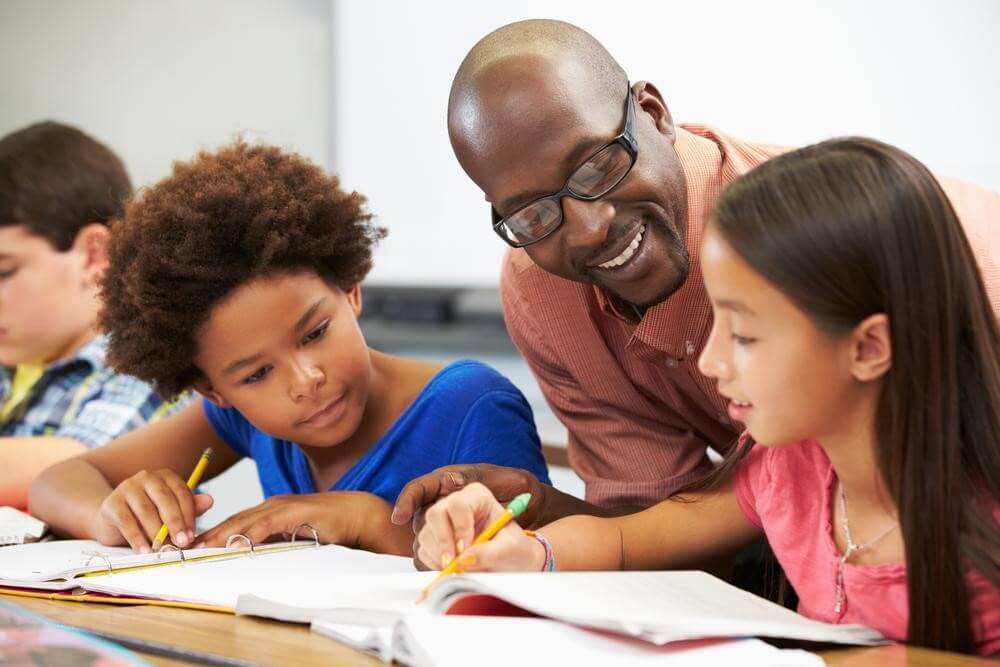Student relationships are one of the most important building blocks to success in the classroom. No matter how well crafted your lesson plan, how creative your methods of instruction are, or how organized your classroom schedule is, without positive relationships, those other efforts will never allow you to tap into the full potential of the young minds you are shaping and guiding.
Positive teacher-student relationships are proven to increase focus and diligence. Students who feel valued and respected by their teachers will, in turn, exhibit better behavior, effective communication, and positive study habits both in and out of the classroom.
Additionally, if you expect students to recognize your authority and demonstrate their respect for you as a teacher, that respect has to be reciprocated to ensure a healthy relationship.
There are several effective ways to build positive interpersonal relationships with your students that will generate results; read on to learn more about great communication habits to adopt to create a warm and welcoming environment that stimulates both personal and academic growth.
1. Show Them Who You Are
Many students fail to connect with their teachers because they do not know anything about them other than they are the people who make the rules. Naturally, some students fear their educators or come into a classroom conditioned to dislike them.
One of the best ways to build trust and connections is by opening up to your students and letting them see a glimpse of who you are outside of the school day. Perhaps you play an instrument. Bring it in to let them hear you play and learn about one of your favorite hobbies.
Share pictures of your pets or tell them about your children or other family members. Let them know why you root for a particular sports team or how you spent your college summers working as a beach lifeguard. Personal communication does wonders for student engagement!
Students enjoy learning more about their teachers’ interests, hobbies, and backgrounds through this kind of positive interaction. By sharing other parts of your life with them, they will see you as more than just a teacher, and you can begin developing a good relationship based on trust and respect.
2. Enforce the Class Structure With Choices

While a teacher has to maintain order and structure to run an effective classroom, there is no reason why it cannot be done with an allowance for some choices on the part of the students.
Giving students a chance to make some of their own choices during the school day is a huge part of helping them grow and develop, and it also builds trust and respect in the student-teacher relationship.
This could mean something as simple as allowing students a choice between two homework assignments—an essay versus a model—or giving them choices for consequences when a deadline is missed—detention versus an extra assignment.
As long as you generally present equitable choices, you should be comfortable in whatever choice the student makes, and in turn, she will feel empowered and trusted.
Look for opportunities to create choices as often as possible; they can be minor in scope but have a major impact on students taking ownership of their own learning and building their self-confidence.
3. Make Time to Make It Personal
Teachers often feel rushed to “pack it all in” to ensure every assignment is finished, every progress report is sent out, and every quiz is graded. In the hustle and bustle of the school day, it sometimes feels as if we are always behind. But there is no better reason to break the normal schedule than to spend time on what builds and nurtures positive relationships.
Spending a few minutes with your class sharing personal stories is never time wasted; when students have a chance to tell you about their weekend fly fishing trip with a favorite uncle, the prize they won at the county fair, or the new trick they mastered on a skateboard, they are giving you a glimpse of what matters most to them. Maybe more importantly, it also shows them that you care.
Celebrating their successes and getting to know their unique talents and personalities will help you create individual bonds and relationships with them, and it also creates wonderful opportunities for peers to connect.
Also, do not be afraid to let them see your sense of humor or share an anecdote about something silly that happened to you! There is nothing like laughter to show students their teachers are human, too.
4. Be Seen Outside the Classroom
Invest time and energy into your students’ activities beyond your classroom walls. If you have time in your schedule, swing by the fourth quarter of the basketball game to cheer on a few of your students or stop by the art club’s fall show to admire their creativity or let the volleyball team wash your car for their fundraiser, your students will feel valued and encouraged.
It may not be possible to make it to every student event, but if you can make an effort to get to two or three a month, this can have a tremendous impact.
5. Practice Fairness, Day in and Day Out

The ultimate goal for a teacher is to treat everyone fairly and with respect at all times. Teachers should engage everyone in the classroom—not just those who raise their hands repeatedly—and teachers should greet every student with the same warm smile, fist bump, or high fives in the morning.
Students are keenly aware of how a teacher’s warmth is shared in a classroom and will be the first to notice if there are any discrepancies. Resist the urge to vent to other colleagues about students in any school setting (where you never know who may be listening), and strive for a consistently positive attitude no matter what hand is raised or what question is asked. If a teacher treats one particular student unfairly, that can backfire on all other good relationships in the classroom.
Positive interactions build positive and healthy relationships at school, which helps your students as they build social relationships with peers and grow into adults who need to manage work relationships, romantic relationships, and more.
Mental health is a prevalent concern among youth, and after parents, teachers probably have the greatest impact on a young person’s well-being. These simple steps will help educators ensure their students have building blocks from a young age to build positive, healthy relationships with those around them.




